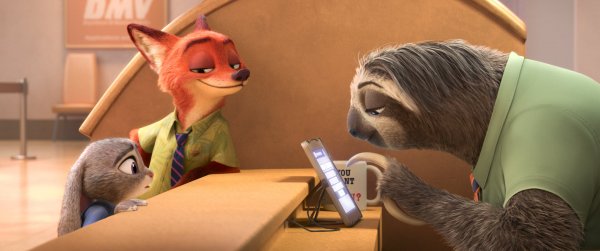Barbershop: The Next Cut
Posted on April 14, 2016 at 5:13 pm

In 1991, Ice Cube was barely into his 20’s when he starred in Boyz N The Hood, one of the most powerful American films of the 20th century, a searing indictment of gang violence and a tribute to one of the truly great fathers in movie history. Fifteen years later, in the third of his “Barbershop” films (fourth if you include “Beauty Shop“), he is now playing the father role but still taking on the tragic toll of gang violence.
It is a gentler film, but it does not pretend that these are gentler times. One of the first images we see is a “No Guns Allowed” sign in the barbershop. Later, when a gang leader comes in for his regular appointment, he hands over two guns to be locked away while he’s in the chair. And there are moments that echo scenes in “Boyz” about the pressure put on young men to join gangs, the danger of the initiation rituals, and the challenges of being a father to a teenager.
The sharp, witty, and heartfelt screenplay is by “Black-ish’s” Kenya Barris and “Survivor’s Remorse’s” Tracy Oliver, and it is directed with warmth and style by Malcolm Lee (“Roll Bounce,” “Undercover Brother”). The original cast returns, led by Ice Cube as Calvin, Cedric the Entertainer and Eve as barbers (Eve’s Terri’s is still trying to protect her apple juice), Sean Patrick Thomas as the upwardly mobile Jimmy (now working for the mayor of Chicago), and Anthony Anderson as the up-to-something but not very good at it J.D. They’re joined by the always-hilarious J.B. Smoove as a jack-of-all-trades and master of most, the always-appealing Common as Rashad, Calvin’s friend and Terri’s neglected husband, the always-terrific Regina Hall as Calvin’s partner on the beauty-shop side, and the always-enticing Nicki Minaj as Draya, a hairdresser who might be interested in Rashad.
Calvin is worried about his 14-year-old son, Jalen (Michael Rainey Jr.), who is wearing dreads and a lot of attitude. He is spending a lot of time with Rashad’s son, Kenny (Diallo Thompson), and worries that he may be a bad influence. He worries more about the constant gang violence in their community, both the threat and the appeal it has for young boys. He thinks it might be time to leave the neighborhood and go somewhere safer.
All of these storylines and more are deftly handled, but, as with the first film, what makes it work is the talk, the constant banter that sways in and out of heartfelt discussion of all the big issues: race, gender, politics, community, family, and love. The talk is intimate and enticing, never stooping to explain its references for anyone’s definition of “mainstream” audiences. That gives it a satisfying warmth and authenticity.
As before, Cedric the Entertainer is the outrageous elder statesman of the group as Eddie, the one who goes there and gives everyone else a chance to react. There are mostly-genial accusations about what men and women want from each other, whether other minorities have the same historical and current struggles as African-Americans, the impact of celebrity scandals like Bill Cosby and R. Kelly, and what anyone can do to stop the violence. Once again, the role of the barber shop as community center, demilitarized zone, and even temporary housing makes this a place we want to keep coming back to.
NOTE: Stay for the credits as there is a funny extra scene.
Parents should know that this film includes sexual references and a non-explicit situation, strong language including racial epithets, gang-related violence, and characters who are injured and killed (off-screen). Characters drink and sell marijuana.
Family discussion: What should families like Calvin’s do to make their communities safer? Who else can make a difference? Where is your favorite place to go hang out and talk to friends?
If you like this, try: the earlier films, Chris Rock’s documentary “Good Hair,” and, for older audiences, “Chi-Raq” and “Boyz N the Hood”





